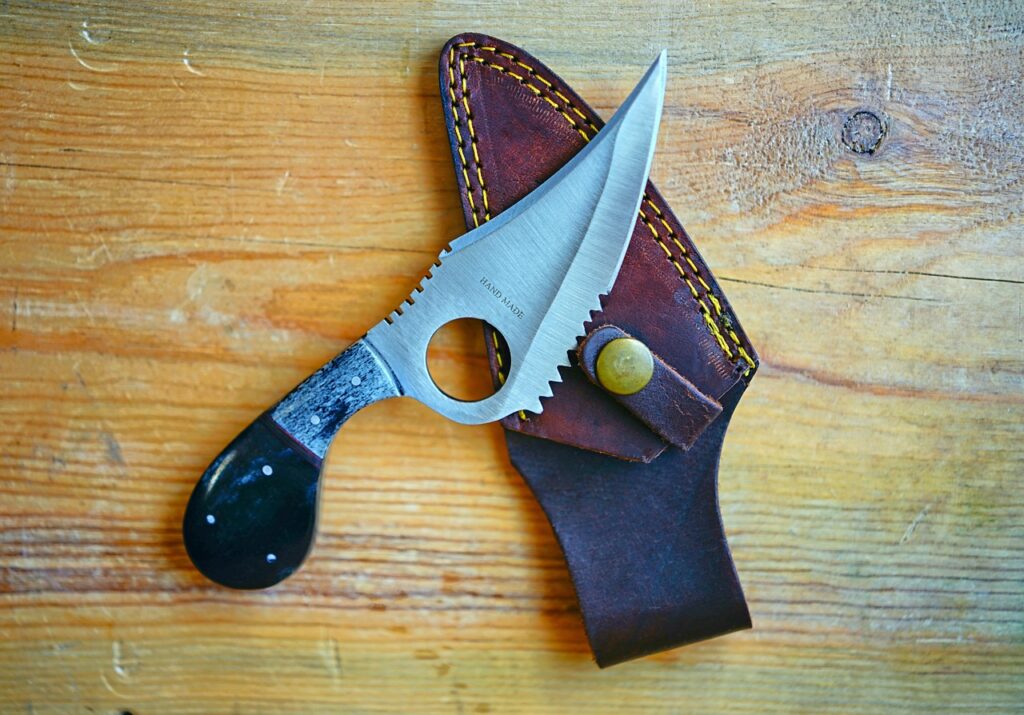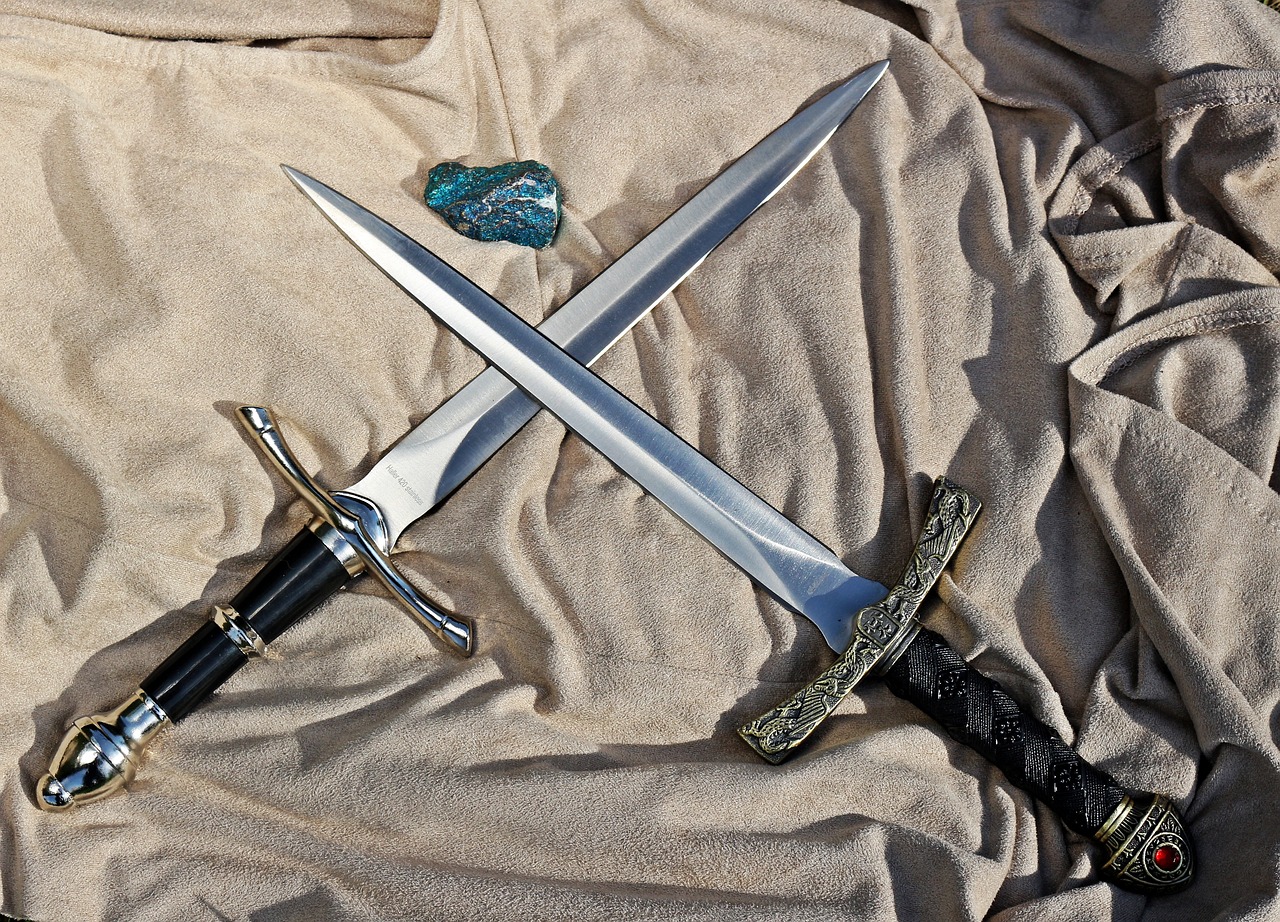Throughout human history, knife weapons have played a significant role, leaving an indelible mark on various aspects of our lives. Transitioning into our exploration, these versatile tools have served diverse purposes, spanning from survival and self-defense to the culinary arts. In this article, we invite you to join us on a captivating journey as we embark on an exploration of the fascinating world of knife weapons. Our aim is to delve into the myriad of types available and unravel their unique applications. By doing so, we will uncover the rich history and cultural significance that surrounds these age-old tools. So, let’s begin our enlightening exploration together.

Contents
- 1 Knife Anatomy: Understanding the Basics Of Knife Weapons
- 2 Knife Classifications: Categorizing Knife Weapons
- 3 Historical Blade Traditions: A Journey Through Time
- 4 Utility Knives: Beyond Self-Defense
- 5 Combat Knives: The Art of Warfare
- 6 Blade Designs: Unconventional and Specialized
- 7 Blade Maintenance: Keeping Your Edge
- 8 Legal Considerations: Navigating Knife Laws
- 9 Frequently Asked Questions About Knife Weapons (FAQs)
Knife Anatomy: Understanding the Basics Of Knife Weapons
TTo gain a comprehensive understanding of knife weapons, it is essential to familiarize ourselves with their basic anatomy. Transitioning into our exploration, let’s examine the key components that make up a knife. Firstly, we’ll embark on an exploration of the composition of the blade. This includes an in-depth examination of the types of steel and alloys used, as well as their specific properties. Transitioning smoothly, we’ll then delve into the various materials utilized for knife handles, encompassing options like wood, bone, plastic, and more. Moreover, it is crucial to discuss the different tang types, namely full tang, partial tang, and hidden tang, which play a pivotal role in determining the overall strength and stability of the knife. Concluding our examination, we will thoroughly scrutinize the various knife components, encompassing the bolster, spine, edge, point, and hilt, thereby fostering a comprehensive understanding of their individual functions.
Knife Classifications: Categorizing Knife Weapons
Now that we have a solid grasp of knife anatomy, let’s categorize knife weapons based on their unique characteristics and intended purposes. Fixed-blade knives, known for their versatility and sturdiness, are a popular choice for various applications. Bowie knives, on the other hand, are renowned for their ruggedness and multi-purpose functionality, making them indispensable tools in survival and combat scenarios.
The elegant and deadly companion known as the dagger has a long-standing history and is favored for its precision. We will also explore the Japanese precision blade called the tanto, known for its exceptional sharpness. The curved and formidable karambit knife is another intriguing type we’ll explore. Moving on, folding knives offer compactness and convenience, while pocket knives serve as everyday utility tools. Swiss Army knives, known for their ultimate multi-functionality, are a favorite among outdoor enthusiasts. Lastly, tactical knives, with their sleek design and tactical precision, are engineered for military and self-defense purposes.
Historical Blade Traditions: A Journey Through Time
To appreciate the significance of knife weapons, we must take a journey through historical blade traditions. We’ll explore the evolution of European blades, from medieval to modern times, tracing their influence on warfare and craftsmanship. Asian blades, including the iconic samurai swords, hold a rich cultural heritage and are admired for their artistry. Middle Eastern blades, characterized by the art of the curved weapon, have a unique aesthetic and functionality. Lastly, Native American blades embody the fusion of craftsmanship and tradition, representing the rich cultural heritage of indigenous peoples.
Utility Knives: Beyond Self-Defense
Knife weapons have practical applications beyond self-defense. Hunting knives are essential tools for hunters, facilitating field dressing, skinning, and butchering game animals. Survival knives, designed for outdoor scenarios, offer versatility and preparedness in challenging environments. Camping knives, with their versatile blades, cater to the needs of camping enthusiasts. Fishing knives, precision tools for anglers, aid in various tasks related to fishing. Additionally, cooking knives are trusted companions for chefs, providing precision and efficiency in the culinary arts.
Combat Knives: The Art of Warfare
In the realm of military and combat scenarios, specific knives assume pivotal roles, contributing to the success and effectiveness of soldiers. Transitioning into our exploration, military knives emerge as indispensable tools, equipping soldiers to carry out a multitude of tasks with efficiency and precision. Additionally, combat daggers take center stage, offering a lethal combination of close-quarter combat capabilities, enhanced accuracy, and strategic maneuverability. Shifting our focus, throwing knives emerge as precision projectiles, demanding skill and technique to achieve accurate throws and achieve precise target sticking.
Moreover, bayonets hold a prominent place in military history, serving as dual-purpose weapons that have left an indelible mark in the annals of warfare. Lastly, in the vast expanse of the field, machetes emerge as the weapon of choice, providing soldiers with practicality, versatility, and adaptability in navigating diverse outdoor situations. Together, these knives form an arsenal of tools that aid soldiers in fulfilling their duties and ensuring their preparedness for combat.
If you are looking for knife weapons then its a must to have a look on Knife carry methods
Blade Designs: Unconventional and Specialized
In addition to the aforementioned knife types, there are unique blade designs that cater to specialized purposes. Balisong knives, also known as butterfly knives, showcase the art of flipping and are captivating in their agility. Boot knives, designed for concealed carry, offer discreetness and functionality. Neck knives, compact and easy to carry, provide convenience in various situations. Ballistic knives fuse blades with firearms, representing an intriguing combination of technologies. Lastly, push daggers offer thrusting power in a compact and easily concealable form.
Blade Maintenance: Keeping Your Edge
To ensure the longevity and optimal performance of knife weapons, proper blade maintenance is essential. Sharpening techniques play a crucial role in honing the blade’s edge, and we’ll explore various methods. Additionally, we’ll discuss the importance of cleaning and proper storage to preserve the blade’s lifespan. Rust prevention measures are also crucial to combat corrosion and maintain the blade’s functionality. Furthermore, we’ll explore handle care, focusing on maintaining grip and aesthetics.
You can find a variety of knife weapons on Amazon
When it comes to knife ownership and usage, it is crucial to be aware of legal considerations. Consequently, we will provide an overview of international knife laws, highlighting the variations across different countries. By understanding knife regulations and concealed carry laws, individuals can effectively navigate the complex legal landscape surrounding knife ownership and usage.
In summary, knife weapons encompass a wide range of types, each with its unique characteristics and purposes. From the versatile and sturdy fixed-blade knives to the sleek and tactical precision of tactical knives, these tools cater to various needs, including self-defense, culinary arts, and outdoor survival. We’ve explored the rich history and cultural significance of knife weapons, emphasizing the importance of responsible ownership and usage.
Frequently Asked Questions About Knife Weapons (FAQs)
To address common queries, let’s answer some frequently asked questions regarding knife weapons:
- Are knife weapons legal to carry in self-defense situations?
- What is the difference between a fixed-blade and a folding knife?
- How often should I sharpen my knife?
- Can I bring a knife on an airplane?
- What is the best material for a knife handle?
By providing answers to these questions, we aim to enhance your understanding of knife weapons and ensure informed decision-making.

